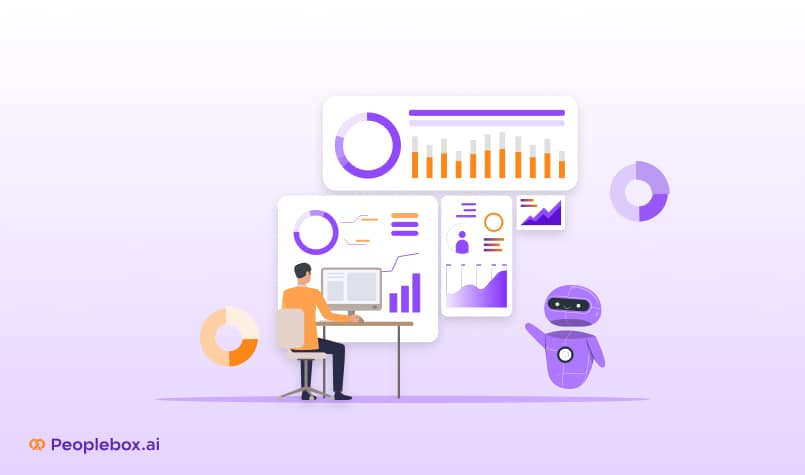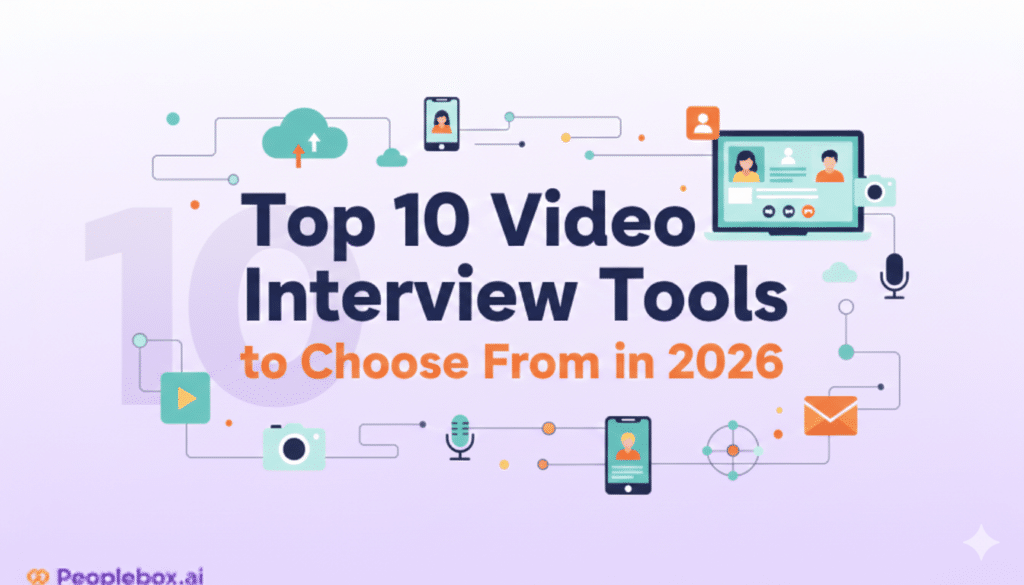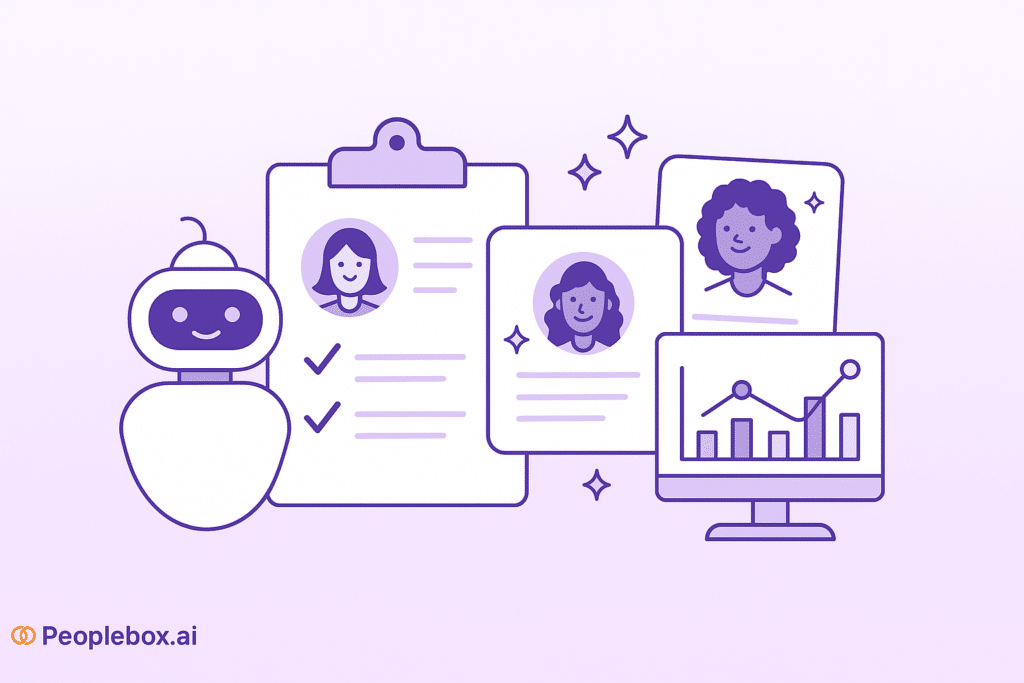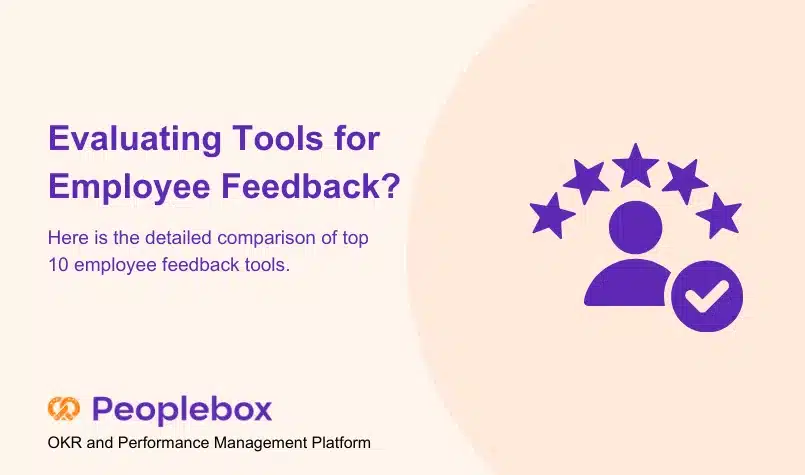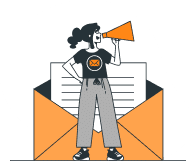TL;DR
HR teams are finally done with guessing games and endless Googling. AI isn’t taking your job, it’s here to cut through the noise and help you focus on what really matters. To sort, analyze, and highlight what matters most so your people strategy actually works.
Here’s how forward-thinking HR teams are putting AI to work: streamlining hiring, nurturing talent, and building workplaces people want to stay in.
When was the last time you didn’t sign at the start of a new hiring round or a performance review cycle?
If you’re still chasing spreadsheets, nudging folks to fill out forms, or stressing over who missed what deadline you’re far from alone.
And chances are, your outcomes aren’t what they could be.But talent management goes way beyond just hiring.
It shows how to attract people, help them grow, and evaluate their performance. It also prepares them and your organization for the future. AI isn’t here to take over human choices. It’s made to improve those moments, helping everyone connect smoothly.
It’s essential to bring in the right individuals. Support their growth and offer sincere feedback along the way. AI isn’t here to replace any of that. It’s just here to make those steps smoother, smarter, and a little less stressful.
What Does “AI in Talent Management” Actually Look Like?
This isn’t some sci-fi future we’re just talking about AI as your always-there, never-tired assistant, helping out behind the scenes.
- It improves candidate matching no more relying on gut feelings from résumés alone.
- It offers live insights into how your team’s doing before things start to slip.
- It personalizes growth guidance and says goodbye to generic learning plans that no one follows.
Still Doing HR the Old Way? Here’s How AI Changes the Game
Traditional HR works but AI brings speed, insights, and adaptability. Here’s how modern teams are stepping up with smarter tools.
| Aspect | Traditional HR | AI-Powered HR |
| Resume Screening | Manual, time-consuming | Fast, skill-based filtering |
| Performance Reviews | Annual, often inconsistent | Continuous, data-backed feedback |
| Learning Recommendations | One-size-fits-all | Tailored to skills, role, and goals |
| Attrition Prediction | Reactive (post-exit feedback) | Predictive, enabling early intervention |
Where AI Actually Makes a Difference in Talent Management

AI isn’t here to do everything but where it does help, the impact is real. Here’s a look at where AI tools really excel throughout the talent journey:
Hiring & Sourcing
AI quickly spots the best candidates. It looks at skills, experience, and how well they fit the team. This saves you time for the more enjoyable part interviews.
Onboarding
Chatbots and automated assistants help new hires with paperwork. They also answer common questions. This allows HR teams to concentrate on building meaningful connections.
Performance Review
AI tools empower managers and colleagues to provide quick, regular feedback. This replaces those dreaded annual reviews. Now, you’ll face fewer surprises and have more meaningful conversations.
Learning & Development
Say goodbye to one-size-fits-all training. AI creates personalized learning paths for each employee. These paths focus on their goals and skills they need to improve. This way, employees grow, and the organization benefits too.
Retention
AI tools spot early signs of disengagement. This includes things like less feedback or missed check-ins. This enables you to intervene quickly and re-engage employees before it’s too late.
Real Results from Real Teams
This isn’t hype. Teams are already seeing meaningful results:
- A mid-sized SaaS company cut its hiring cycle by 38% using AI to screen applicants faster and more accurately.
- Another company saw retention improve by spotting disengagement signals early before anyone handed in their notice.
- Performance reviews turned into ongoing, real conversations instead of that dreaded once-a-year ritual.
What the Numbers Say: AI’s Impact on HR by the Data
You don’t have to take it on faith here’s what the data shows:
- Hiring faster and smarter
72% of HR leaders say AI helps them quickly find better candidates. They no longer depend on instincts or wade through countless resumes. - Engagement that sticks
Companies using AI for performance reviews see a 25–30% boost in engagement and productivity. - Cutting turnover before it happens
Predictive attrition models have reduced unwanted turnover by up to 20–33% in real-world use cases.
Why AI Can’t (and Shouldn’t) Replace Human Judgment
AI is not here to replace your managers. It can’t build trust, it can’t resolve tension, and it certainly can’t give empathetic feedback.
But it can:
- Save your team hours lost to admin.
- Surface patterns hidden in your data.
- Help you focus where it really counts.
AI works best with people, not in place of them.
| Want to dive deeper? Check out our blog on How AI is Changing HR for Good. We break down real-world use cases, ethical concerns, and what’s next for AI in HR. |
Ready to Try AI in HR? Here’s Where to Start
Feeling overwhelmed? Don’t be. You don’t need to revamp everything overnight. Start simple:
- Find your biggest pain point. Is hiring dragging? Are reviews inconsistent? Zero in on that.
- Solve one thing well. Don’t boil the ocean. Pick one area and make it better.
- Choose a platform that fits. One that brings together goals, check-ins, engagement all in one.
- Bring your team along. Show them what the AI reveals and how to act on it.
| Looking for the right AI tools for your HR team? Check out AI Tools HR Teams Love we share vetted software picks, setup tips, and how to get them working in your workflow. |
Why Human Judgment Still Matters Most
Let’s face it, AI is remarkable, but it isn’t perfect. It can spot patterns, identify risks, and speed up decisions. Yet, it may carry biases from its training data and miss the human stories behind the statistics.
That’s why we need real people involved when using AI in HR.
Use AI to reveal insights, but let humans make the final calls. Allow it to raise concerns, but count on your team to decide what’s fair, compassionate, and fits with your company culture.
Ultimately, AI can boost our decision-making, but it’s the people who truly represent our values. This balance builds trust and leads to better workplaces.
Peoplebox.ai: Your HR Team’s Smartest Ally
AI isn’t just a buzzword anymore it’s powering real improvements across hiring, reviews, and engagement. But tools only work when they’re built for real teams. That’s where Peoplebox.ai stands out.
It puts everything in one place: goals, feedback, mood with live dashboards that actually update. No more stale reports or tab-hopping.
It fits right into your stack Slack, ATS, CRM no messy rewiring needed. And it flags early warning signs like missed check-ins, so managers can act before issues grow.
Whether you’re 50 or 5,000 people strong, Peoplebox.ai scales with you. No heavy setup. No drama.
It’s not about using AI for the sake of it. It’s about using the right tool to bring people, planning, and performance together. That’s what Peoplebox.ai does best.
Frequently Asked Questions(FAQs)
What are the benefits of using AI in talent management?
AI helps HR teams work smarter, not harder. It speeds up hiring by pre-screening candidates. It boosts retention by spotting disengagement early. Also, it makes performance reviews more meaningful with real-time feedback and insights.
Can AI replace HR professionals?
No. AI is a tool, not a replacement. It manages repetitive tasks and reveals insights. Human judgment matters for interviews, tough talks, culture fit, and leadership.
What are examples of AI tools used in HR today?
Popular tools are:
- AI-powered applicant tracking systems
- Sentiment analysis in engagement surveys
- Predictive analytics for workforce planning
Peoplebox.ai combines OKRs, performance reviews, and engagement signals. All of this is supported by AI.
Is AI in HR safe and unbiased?
AI is only as good as the data it learns from. That’s why HR teams must regularly review and validate AI decisions to ensure fairness. Responsible platforms are clear and let users take control to keep humans involved.

